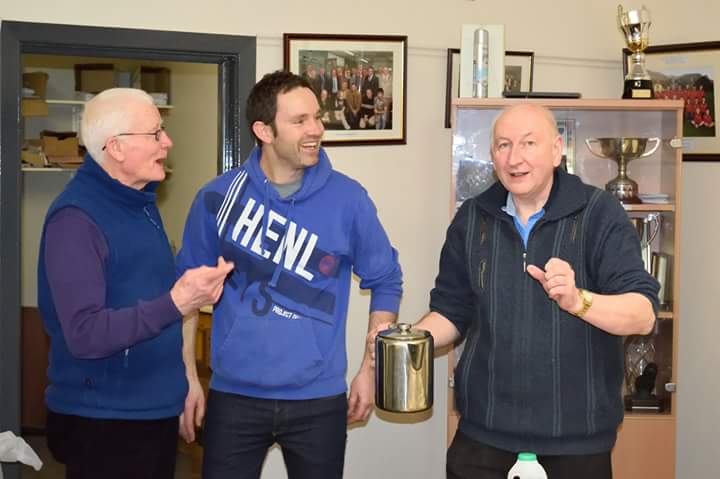This year marks the centenary of the worst shipping disaster to occur in South Down.
On 3 November 1916, the Newry collier, Retriever, and the railway passenger steamer, Connemara, collided at the entrance to Carlingford Lough during atrocious weather conditions. In a matter of minutes 94 people perished within sight of the shore.
Speaking at a presentation in Rostrevor organised by the Rostrevor Men’s Shed, local maritime historian Seán Patterson examined how these two vessels happened to be in the wrong place at the wrong time. He also explained how fate determined how some would sail that night whilst others would not. During the illustrated talk in a packed St Bronagh’s GAA Clubrooms, Séan Patterson also covered several other related aspects of the tragedy including local folklore, and the history of each vessel prior to the collisions.

***
Owned by the London and North-Western Railway Company, the Connemara and 30-man crew under captain GH Doeg were from Holyhead in north Wales. On board were soldiers from across Ireland returning from the war raging in Europe, and people hoping to migrate to Australia and America.
The other fated vessel, the Retriever, owned by the Clanrye Company, was skippered by Captain Patrick O’Neill, a Kilkeel man with his son Joseph Second Mate was his son Joseph acting as second mate.

That night the seas were very heavy and it was questionable if the Connemara would in fact sail, but sail she did.
At around 4am, the Retriever was well loaded up and headed into the sea gales towards Newry from Garston port and a short time later at 8am, the Connemara left Greenore soon after for Holyhead.
Then almost three miles outside Greenore, the Connemara steamed past Hawbowline lighthouse where the emergency went into full mode as the two ships were spotted close to each other (in the days before ship’s radar was invented.) The lighthouse fired off flares as a warning but the Retriever battled with the sea conditions and was forced by strong winds into the side of the Connemara causing extensive damage to the hull.
The ships momentarily held together but then the Retriever has gone into reverse and the Connemara was left with a gaping hole midships. Within minutes the Connemara then the Retriever were sinking rapidly. A total of 94 men and women died. There was one survivor, a fireman called James Boyle (21) from Warrenpoint.
As the morning progressed, the bodies of the crews and passengers and dead cattle littered the beaches. Local farmers arrived in carts and a morgue was set up.
Sean has delivered this talk throughout the North of Ireland and also in Holyhead where the Connemara was bound on that fateful night. In 1996, at his request, the local council unveiled a plaque marking the 80th anniversary of the collision.
Mark Gibbons, St Bronagh’s GAA chairman said: ” I have to give a massive thank you to Sean for his fascinating talk regarding the Carlingford Lough Disaster. The place was packed and everyone enjoyed the presentation from start to finish.
“We are going to have to get Sean down to Rostrevor again for sure! He is a wealth of knowledge and an absolute gentleman. Myself and my fellow Shedders were just in awe of the man’s knowledge.”
***
On 30 March, a talk, ‘Rostrevor Lives: Pvt Andrew Robb and Tom Dunn’, also took place. “Guest speaker this week, fellow Shedder John McCavitt, ‘shed’ light on the careers of two Rostrevor men who probably knew one another,” explained Mark Gibbons. Pvt Andrew Ross XXth Reg, (who was one of the burial party for Napoleon and first caretaker of the Ross monument), and Tom Dunn, Hedge School Master and ’98 Patriot and Martyr.
“We have had a good number of successful public talks and meetings in the last couple of months, and we just love hosting them. Fellow Shedders Pasty Curran, Jimmy Owens, David Powels and Martin Og McGinn are to the fore when it comes to organising and setting up these talks.”

























